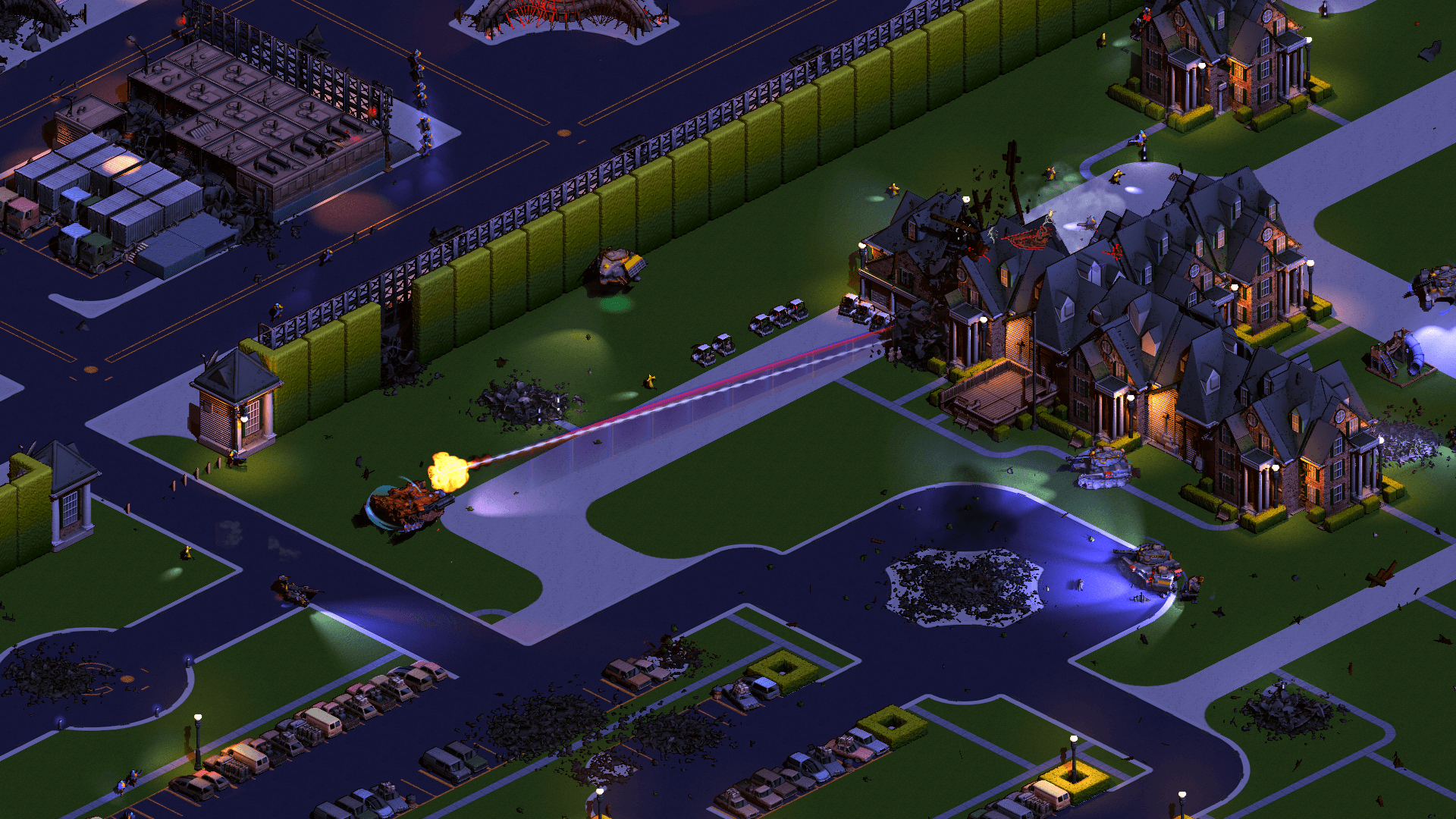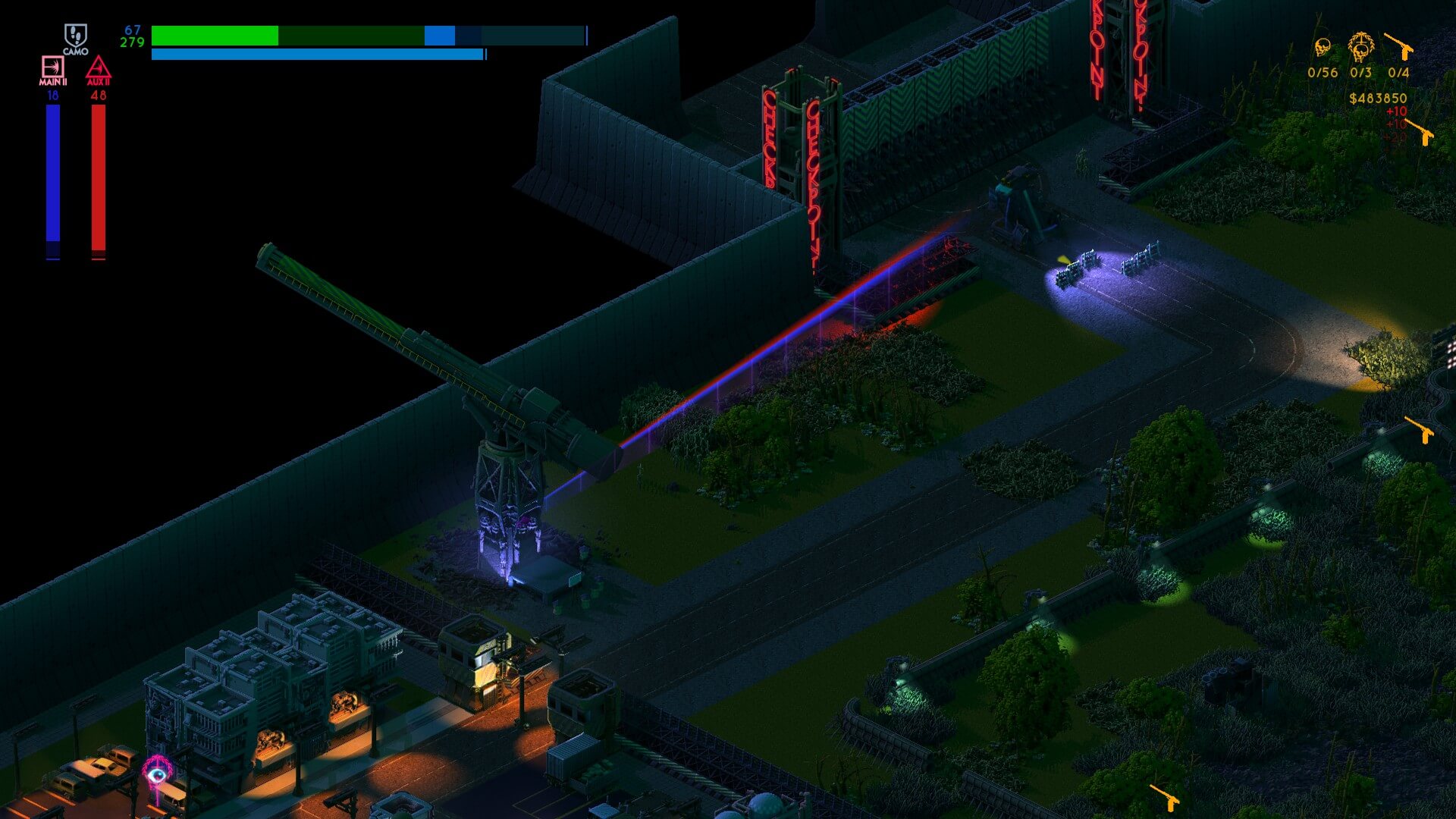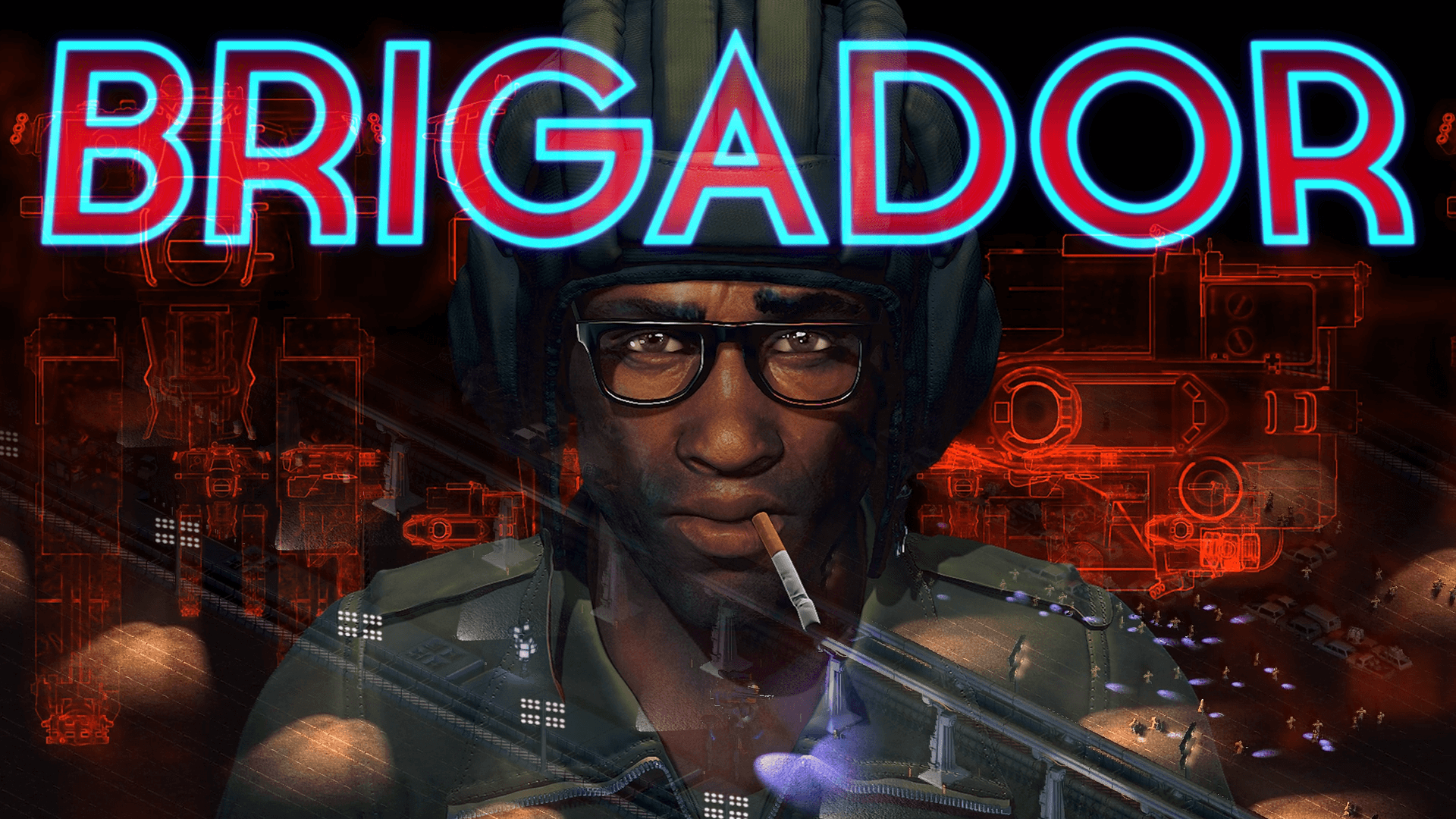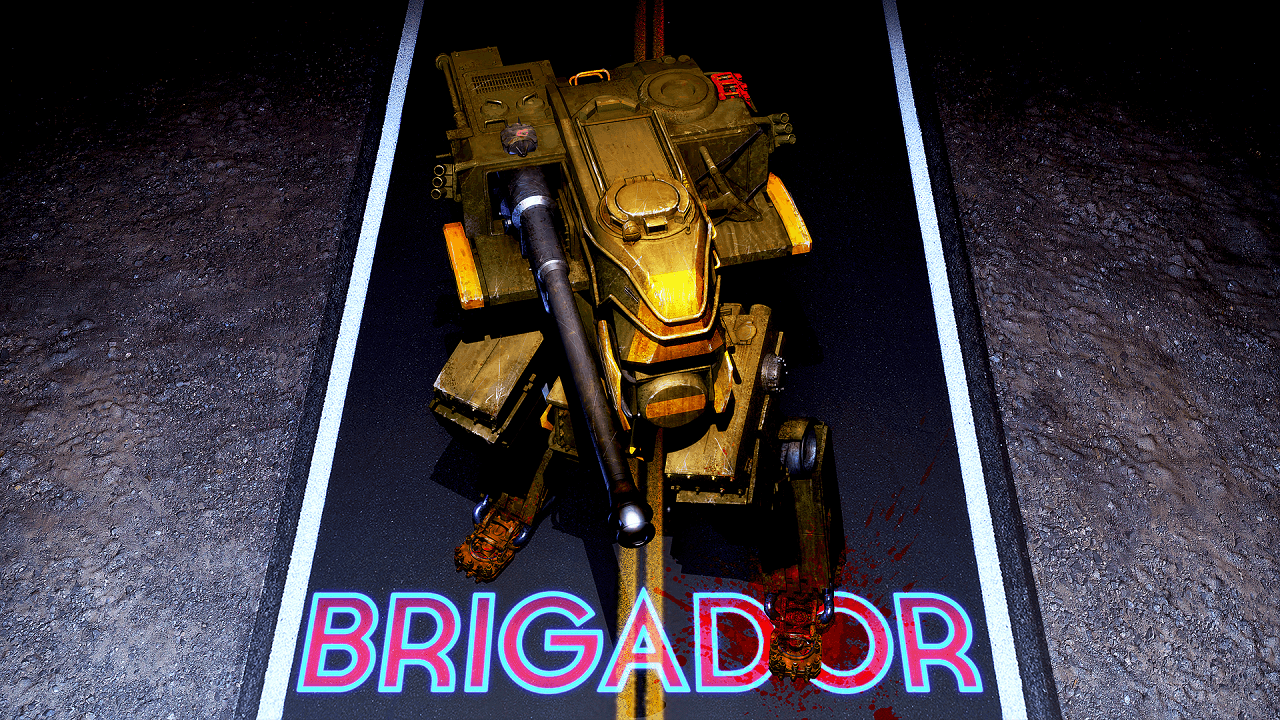Title: Brigador
Version Tested: PC
Available On: Linux, Mac OS, Windows
Developer: Stellar Jockeys, Gausswerks
Publisher: Stellar Jockeys
Genre: Isometric Shooter
Official Site: https://stellarjockeys.com/
Release Date: October 16, 2015 (Early Access), Q2 2016 (Full Release)
Where To Buy: Steam
Note: This is a review of a game in Early Access. The developers of Brigador, Stellar Jockeys, have stated that they plan on a six month early access period leading up to the game’s full launch. Since we are only about a month into that process, there is still a lot of development left to go.
[embedyt] https://www.youtube.com/watch?v=1ajbfIRZApI[/embedyt]
[gap height=”15″]
Brigador is a game that caters towards your play-style. Do you like to zip around enemies, dodging attacks and countering against weak points? Do you like to sneak around, picking the perfect opportunity to strike? Or do you like to load up as heavy-duty as possible, blasting down the front gates and mowing down all enemies in your path? There are multiple ways to approach the battles of Brigador, and the games unique style and unrelenting difficulty will keep you coming back to try new combinations.
Brigador is an isometric vehicular action game that puts the player in control of a variety of combat vehicles in completely destructible environments. The view and controls bring to mind the classic Jungle Strike and Desert Strike from the 16-bit era. Every mission gives you several options in order to achieve victory: multiple objectives are available, and only one needs to be completed in order to “win” each level. Standing in your way is a relentless difficulty that punishes a lack of planning as well as a “one death and start over” policy. Multiple missions must be completed in a single run in order to fully complete the contract and achieve victory.

When it is time to accept a contract in Brigador, which is a series of multiple consecutive missions to be completed in immediate succession, the player is presented with a vehicle customization screen. As of right now, there are nine selectable vehicles that fit all manner of playstyles. Quick hovering vehicles, slow and deliberate tanks, and even walking mechs can be selected, each with a wide range of stats including speed, shields, and armor. On top of that, each vehicle has a selection of primary and secondary weapons along with an auxiliary option (such as active camo or smoke bombs). This equates to a tremendous variety of options to tackle each mission before you even launch.
This variety is a big part of what makes Brigador so appealing, even in its early state. It is pretty clear before you launch what your vehicle will be capable of, and no strategy seems overpowered or underpowered at this point. Each map is laid out the same each time, but enemy placement is randomized. This makes it impossible to know which strategy will be most effective every time and forces the player to adapt to the situations as the present themselves.

Once the player hits the map, there is one important decision to make: which victory path should you take? On each map, there are three possible ways to win: destroy the huge (and well-protected) control towers, eliminate the powerful leader enemy units, or kill a high number of the little minions running around the map. You do not have to specifically pick an objective, so you can switch your style halfway through, but it does help to have a plan from the get-go.
This is especially important for beginners because of a rather unforgiving difficulty swing. Brigador lulls you in with its first mission, but this game is a tough nut to crack. If you think yourself invincible and allow yourself to get outflanked, you will die. Quickly. There are no saves, no progressions, and no unlocks (so far, the developers have stated that an unlock and leveling system is planned for a future update). As of yet, Brigador is an old-school arcade experience: you mess up, you start over. This punishing difficulty can be a bit off-putting when you are first starting out, but it emphasizes the deep level of skill and strategy that underlie the core mechanics of the game.

One of the big knocks against games in Early Access is that games do not get finished and the early adopters do not have a voice in game development. This does not seem to be the case with Brigador. About once a week, the developers have released a new update along with a detailed blog post about what players can find in it. They also detail what players can expect in coming updates and seem very in touch and responsive to suggestions from the community. This can obviously change, but the very small development team (only four people as of this writing) seems to respect and appreciate the community and are eager to work with them to develop the best game possible.
Since Brigador is still in very Early Access, there is obviously quite a bit missing. The tutorial is very bare bones in explaining strategy and how different weapons and vehicles can alter your playstyle. There is a complete lack of story – there is a very cool, dystopian sci-fi vibe. But there is not much of an indication who you are and why you are doing what you are doing. Finally, the lack of weapon unlocks or any sort of progression system makes the game tough to play for any extended length.

These current issues stand in the way of making Brigador a right now must purchase. If you like to be a part of the development process on Steam Early Access and like arcade-style action games, Brigador has a lot of polish already and seems to be trending in the right direction. If you are more of a cautious purchaser, it is tough to recommend Brigador in this early of a development state. For those gamers: wait and see if some of those features get added and implemented properly. If they do, Brigador has the potential to be yet another indie darling for Steam libraries everywhere. After all, who doesn’t love stomping around fully destructible environments in a giant robot?
What do you think of Brigador so far? Planning on picking this one up, or has Early Access burned you too many times? Let us know!
[review]







